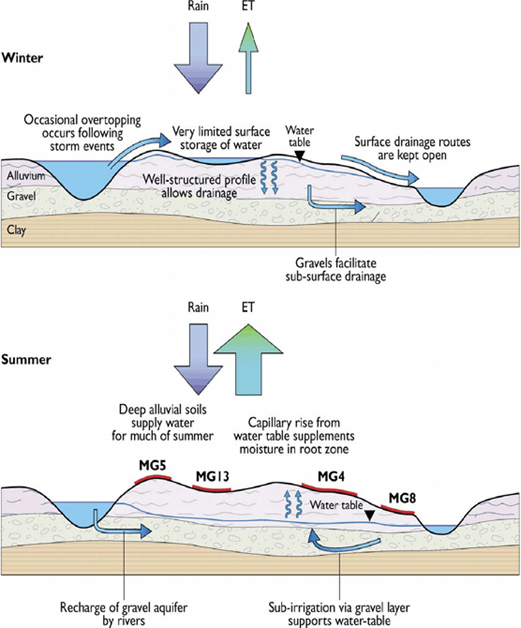Great burnet-meadow foxtail (MG4) meadows require adequate surface drainage to allow water to flow freely back to watercourses following a flood, and to prevent the retention of rainwater on the surface for long periods. Many meadows lie over river gravel deposits which ensures a well drained site.
They are generally intolerant of water logging during the growing season, to the extent that too much water can be more damaging than too little at this time of year.
These grasslands have developed under a system of traditional agricultural management and are therefore reliant on the surface drainage system developed and maintained by farmers. Surface drainage provided by features such as grips, gutters and foot drains should be regularly maintained to ensure their continued function. The input of nutrients locked up on the sediment deposited after a flood is important to compensate for nutrient losses to the system during the hay cut.
Past flood protection works that involved deepening, straightening or embanking rivers can be detrimental to these meadows. Apart from the direct loss of habitat, these changes may result in a reduction of winter floods on the site, or in a prolonged period of waterlogging during summer flooding, when floodwater is trapped on the floodplain by the embankments. The various hydrological mechanisms that can support the Burnet floodplain meadow plant community are shown below:
